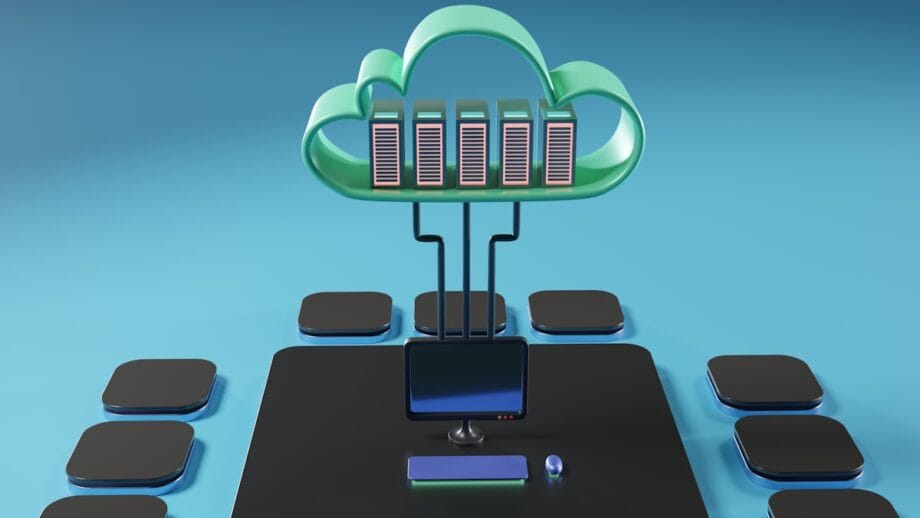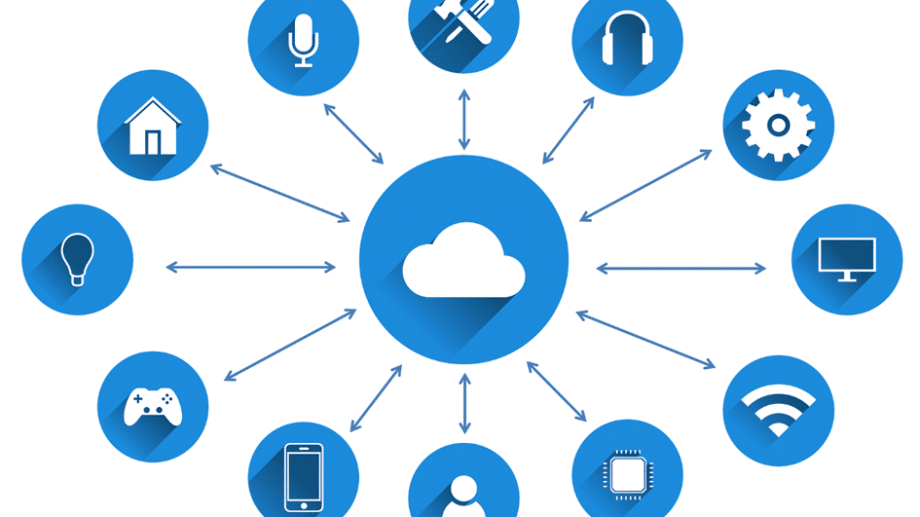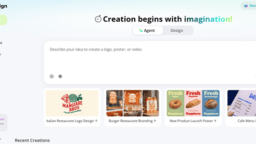The cloud is no longer just a destination for storage and compute; it has become the dynamic engine of modern digital transformation. What began as a shift away from on-premises data centers has evolved into a complex, intelligent ecosystem capable of driving innovation at an unprecedented pace. For businesses, developers, and IT leaders, staying abreast of this evolution is no longer a strategic advantage; it’s an operational necessity.
Falling behind means missing out on monumental gains in efficiency, security, and scalability. The emerging cloud solutions defining the landscape for 2025 and beyond are focused on solving core challenges: managing complexity, ensuring integrity, democratizing advanced technology, and pushing capabilities closer to the point of action.
This article explores the key cloud innovations poised to reshape industries, highlighting the specific tools and platforms that are leading the charge.
1. Multi-Cloud Management Platforms: Taming the Complexity

As organizations increasingly adopt a “best-of-breed” approach, using services from multiple cloud providers like AWS, Microsoft Azure, and Google Cloud Platform (GCP) has become the norm. However, this multi-cloud strategy introduces significant complexity in cost management, security governance, and operational oversight.
Solution:
Multi-cloud management platforms provide a single pane of glass to oversee and orchestrate resources across different cloud environments. They act as a centralized control tower, offering unified visibility and governance.
Benefits:
- Cost Optimization: They identify wasted spending, recommend resource right-sizing, and apply consistent cost-management policies across all clouds.
- Centralized Security and Compliance: Security policies, identity access management, and compliance benchmarks can be defined once and enforced universally.
- Simplified Operations: Teams can deploy, monitor, and manage applications across clouds from a single interface, reducing tool sprawl and administrative overhead.
Platforms to Watch:
- HashiCorp Terraform: An infrastructure-as-code tool that has become the de facto standard for defining and provisioning consistent infrastructure across any cloud.
- Flexera One: A robust platform known for its comprehensive IT asset management and cost optimization capabilities in hybrid and multi-cloud environments.
- VMware Aria: A suite of applications for managing multi-cloud infrastructure, focusing on cost, performance, configuration, and automation.
2. Cloud Code Signing Solutions: Ensuring Software Integrity from the Cloud

In an era of sophisticated software supply chain attacks, verifying the authenticity and integrity of code is paramount. Traditional code signing, which relies on storing private keys on local hardware security modules (HSMs) or servers, presents risks like key theft, physical token loss, and bottlenecks in DevOps pipelines.
Solution:
Cloud code signing moves the entire process to the cloud. The private signing keys are generated and stored within FIPS 140-2 Level 2/3 validated cloud HSMs, never leaving the secure hardware. Authorized developers can then sign code through a secure, audited API call.
Benefits:
- Enhanced Security: Eliminates the risk of private key theft from developer machines. Keys are generated and stored in a secure, tamper-proof cloud HSM.
- Streamlined Certificate Automation: Code signing is seamlessly integrated into CI/CD pipelines (like GitHub Actions or Azure DevOps), enabling fully automated, consistent signing without manual intervention.
- Improved Auditability: Every signing request is logged with detailed context, providing a clear, immutable audit trail for compliance and governance.
A Specific Use Case:
Services like SignMyCode’s Azure Key Vault Code Signing exemplify this trend. This solution leverages the trusted, hardware-backed security of Microsoft Azure Key Vault to manage code signing keys. Developers can automate the signing process within their Azure-based workflows, ensuring that every release is securely signed without manual handling of keys or tokens, thus balancing stringent security with the speed of modern development.
3. Cloud-Based AI and Machine Learning Platforms: Democratizing Intelligence

The AI revolution is being powered by the cloud. The immense computational power and massive datasets required for training and deploying machine learning models are prohibitively expensive for most organizations to host on-premises. Cloud-based AI/ML platforms have emerged to level the playing field.
Solution:
These platforms offer AI and ML as a service, providing pre-built APIs, managed infrastructure for training, and tools for the entire ML lifecycle (MLOps). This allows data scientists to focus on building models rather than managing infrastructure.
Benefits:
- Access to State-of-the-Art Models: Businesses can leverage powerful pre-trained models (like large language models for generative AI) via a simple API call.
- Scalability on Demand: Training jobs can spin up hundreds of GPUs for hours and then scale down, avoiding massive capital expenditure.
- Faster Time-to-Market: MLOps features automate model deployment, monitoring, and retraining, accelerating the journey from experiment to production.
Platforms and Emerging Trends for 2025:
- Google Cloud Vertex AI: A unified platform for building, deploying, and scaling ML models faster, with tools for the entire workflow.
- AWS SageMaker: A comprehensive service that enables developers and data scientists to build, train, and deploy ML models at scale.
- Azure Machine Learning: A cloud-based environment for training, deploying, automating, and managing ML models.
Trend to Watch – Generative AI as a Service. The integration of foundation models (e.g., GPT-4, Llama) into these platforms is a dominant trend, allowing businesses to build custom AI applications without training models from scratch.
4. Serverless and Function-as-a-Service (FaaS) Platforms: The Abstraction of Infrastructure

Serverless computing represents the ultimate abstraction of infrastructure management. Developers simply deploy their code (as a function), and the cloud provider dynamically manages all the underlying servers, scaling, and patching.
Solution:
FaaS platforms execute code in response to events, scaling automatically from zero to thousands of concurrent executions and back down to zero, ensuring you only pay for the compute time you consume. The emerging trend is the expansion of serverless beyond functions to encompass databases, storage, and integration services.
Benefits:
- Reduced Operational Overhead: No server management, no capacity planning. Developers can focus purely on business logic.
- Inherent Scalability: Applications built with serverless architectures can handle unpredictable traffic spikes seamlessly.
- Cost-Efficiency: The “pay-per-execution” model eliminates charges for idle resources.
Examples:
- AWS Lambda: The pioneer and market leader in the FaaS space, tightly integrated with the entire AWS ecosystem.
- Azure Functions: A strong competitor that excels in enterprise environments and integrates deeply with Microsoft services.
- Google Cloud Functions: A key part of the GCP serverless suite, often praised for its developer experience and integration with Google’s data and AI services.
5. Cloud Security and Compliance Tools: Trust in a Shared Responsibility Model

The shared responsibility model of the cloud (where the provider secures the infrastructure, and the customer secures their data and applications) has created a need for a new generation of security tools. These tools are cloud-native, meaning they are designed specifically for the dynamic and API-driven nature of cloud environments.
Solution:
Emerging cloud security tools provide automated compliance checking, continuous threat detection, and unified risk management. They use machine learning to analyze configuration data, user activity, and network traffic to identify misconfigurations and malicious behavior in real-time.
Key Benefits:
- Proactive Risk Management: Continuously scan cloud environments for misconfigurations (like publicly exposed storage buckets) before they can be exploited.
- Automated Compliance: Ensure cloud deployments adhere to standards like GDPR, HIPAA, and PCI DSS with automated policy enforcement and reporting.
- Unified Visibility: Gain a holistic view of the security posture across multiple clouds, overcoming the visibility gaps of native, siloed tools.
Tools to Watch:
- Wiz: An agentless security platform that rapidly identifies critical risks across clouds by scanning the entire runtime environment.
- Palo Alto Networks Prisma Cloud: A comprehensive Cloud Native Application Protection Platform (CNAPP) that provides security across the entire development lifecycle and runtime.
- Microsoft Defender for Cloud: A tool that helps harden cloud resources, detect threats, and strengthen compliance posture across multi-cloud and hybrid environments.
6. Hybrid and Edge Cloud Solutions: Blending the Best of All Worlds

Not all workloads can, or should, live entirely in the public cloud. Latency sensitivity, data sovereignty regulations, and the need to leverage existing on-premises investments have driven the adoption of hybrid and edge models.
The Emerging Solution:
Emerging solutions are creating a seamless fabric that connects public cloud regions, private data centers, and edge locations. These platforms allow for unified management, deployment, and security policies across this distributed infrastructure.
Key Benefits:
- Reduced Latency: Process data locally at the edge for applications like autonomous vehicles, real-time video analytics, and industrial IoT.
- Data Sovereignty: Keep sensitive data within a specific geographic boundary to comply with local regulations.
- Resilience and Reliability: Applications can run disconnected from the central cloud or failover between locations for maximum uptime.
Key Sectors and Platforms:
Sectors: Manufacturing (predictive maintenance on the factory floor), Retail (personalized in-store experiences), Healthcare (processing patient data at the hospital), and Telecommunications (5G network functions).
Platforms to Watch:
- AWS Outposts & Wavelength: Bring AWS infrastructure and services to your data center or carrier’s 5G network edge.
- Azure Arc & Azure Private MEC: Enables you to manage and govern resources across on-premises, multi-cloud, and edge from a central Azure portal.
- Google Distributed Cloud: A portfolio of solutions for running Google Cloud services at the edge or in your data center.
Navigating the Future Cloudscape

The cloud landscape of 2025 is defined by intelligence, integration, and imperatives. The emerging solutions we’ve explored, from multi-cloud management and code signing to serverless AI and edge computing, are not isolated trends but interconnected pieces of a larger puzzle. They collectively address the core demands of the modern digital enterprise: to be more agile, more secure, and more intelligent.
Adopting these technologies is no longer just about keeping up with the competition; it’s about future-proofing your organization. By understanding and strategically implementing these emerging cloud solutions, businesses can build a resilient, efficient, and innovative foundation for the next decade. The question is no longer if you should explore these solutions, but which one you will start with to drive your next wave of growth.






